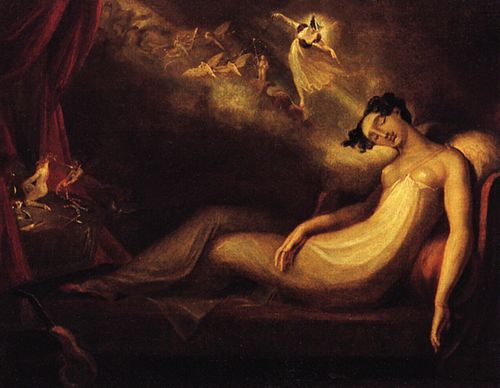Annotation:Air in Queen Mab
X:1 T:Air in Queen Mab M:6/8 L:1/8 R:Air B:Neil Stewart – “Select Collection of Scots, English, Irish and Foreign B:Airs, Jiggs & Marches, vol. 1” (1784, p. 6, No. 12) Z:AK/Fiddler’s Companion K:D a3 {g}f>ed|(fb)b b2d'|(af).a (ge).g|(fdf) {f}e3| a3 {g}f>ed|(fb).b b2d'|aff gea|fdd d3:| |:(fa2) Te3|(fa2) Te3|(fa).a ^gbd'|c'aa a2 (b/c'/| d'2) (a/f/ b2) (g/e/|a2) (f/d/ g2) (e/c/|d2)b a2b|(ag).f {f}e2A| d3 {f}e>de|(fd').d' d'2b|aff gea|fdd d3:|]
AIR IN QUEEN MAB. English, Scottish; Air (6/8 time). D Major. Standard tuning (fiddle). AABB. Queen Mab was a pantomime or an afterpiece (a short play after the mainpiece; in this instance, Queen Mab was staged after a revival of The Beggar's Opera) written by Charles Burney [1] (1726-1814) who composed the music, although it also contained music by James Oswald and others) and the actor Henry Woodward and staged in Drury Lane the day after Christmas, 1750. It was advertised: 'A New Entertainment in Italian Grotesque Characters call'd Queen Mab, Harlequin by Mr. Woodward'..." Presumably, the 6/8 jig was a piece from Burney's production. See also James Aird's "Dance in Queen Mab" and "Queen Mab" for other tunes associated with the pantomime.

